BMW i3 LCI
Subcompact HatchbackProduct Gallery
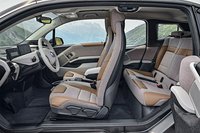

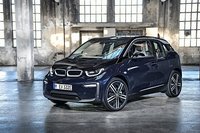
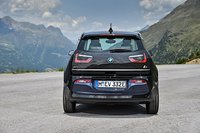
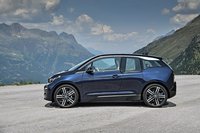
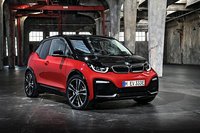
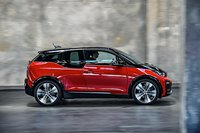
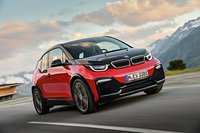
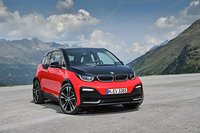
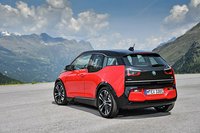
Product Overview
BMW i3 LCI is a subcompact hatchback in production from 2017 to 2022. It was powered by electric motors of 170hp aided by batteries from 33kWh to 42kWh. A tiny inline-2 engine is optional as a "range extender".
BMW has made a good effort in aerodynamics, with a decent 0.28 coefficient of drag to show for it.
Drivers who appreciate handling should keep in mind that the BMW i3 (facelift 2017) uses MacPherson front suspension, which doesn't provide the best cornering performance. Another plus is the small 9.8m (32.1ft) turning circle.
Ratings
What we found
Neofiliac score 11%
Pros
- Good 0.28 drag coefficient
- Small turning circle
Cons
- Very, very ugly
- Nonsense positioning
- Greenwashing
- Stuck with MacPherson struts in the front
What external reviewers found
External score 61%
Pros
- Fantastic range
- Decent electric range
- Comfortable ride
- Comfortable to drive
- High-quality interior
Cons
- Lack of standard equipment
- Poor ride quality
- Expensive compared to rivals
- Lack of infotainment
- Cramped rear cabin
- No range extender
Your rating:
12345678910
?/10
Price Comparison
As associates of the merchants above, we earn a commission when you make a purchase using the supplied links.
Specifications
[[{"Ft":"Capacity","Fn":"Cargo Capacity","Fv":"260 L / 9.2 cu-ft ~ 1100 L / 38.8 cu-ft"},{"Ft":"Capacity","Fn":"Fuel Capacity","Fv":"9.0 L / 2.4 gal"},{"Ft":"Capacity","Fn":"Passengers","Fv":"4"},{"Ft":"Capacity","Fn":"Payload","Fv":"425 kg / 937 lbs"},{"Ft":"Chassis","Fn":"Brakes | Front","Fv":"Ventilated discs"},{"Ft":"Chassis","Fn":"Brakes | Rear","Fv":"Ventilated discs"},{"Ft":"Chassis","Fn":"Power Steering","Fv":"Electric Steering"},{"Ft":"Chassis","Fn":"Suspension | Front","Fv":"MacPherson strut"},{"Ft":"Chassis","Fn":"Suspension | Rear","Fv":"Multi-link"},{"Ft":"Chassis","Fn":"Tire Size","Fv":"Front wheel tires: 155/70 R19, 155/60 R20 Rear wheel tires: 155/70 R19, 175/60 R19, 175/55 R20"},{"Ft":"Chassis","Fn":"Turning Circle","Fv":"9.9 m / 32.3 ft"},{"Ft":"Construction","Fn":"Battery | Capacity","Fv":"33.2 kWh (gross) | 27.2 kWh (net)"},{"Ft":"Construction","Fn":"Battery | Type","Fv":"Lithium-ion"},{"Ft":"Construction","Fn":"Battery | Voltage","Fv":"353.0 V"},{"Ft":"Construction","Fn":"Body Style","Fv":"5-door battery-electric Hatchback"},{"Ft":"Dimensions","Fn":"Ground Clearance","Fv":"139 mm / 5.5 in"},{"Ft":"Dimensions","Fn":"Size | Height","Fv":"1598 mm / 62.9 in"},{"Ft":"Dimensions","Fn":"Size | Length","Fv":"4011 mm / 157.9 in"},{"Ft":"Dimensions","Fn":"Size | Width","Fv":"1775 mm / 69.9 in | 2039 mm / 80.3 in (mirror unfolded)"},{"Ft":"Dimensions","Fn":"Track Width | Front","Fv":"1571.0 mm / 61.9 in"},{"Ft":"Dimensions","Fn":"Track Width | Rear","Fv":"1576.0 mm / 62.0 in"},{"Ft":"Dimensions","Fn":"Weight","Fv":"1245.0 kg / 2744.8 lbs"},{"Ft":"Dimensions","Fn":"Wheel Size","Fv":"Front wheel rims: 5J x 19, 5J x 20 Rear wheel rims: 5J x 19, 5.5J x 19, 5.5J x 20"},{"Ft":"Dimensions","Fn":"Wheelbase","Fv":"2570 mm / 101.2 in"},{"Ft":"Performance","Fn":"Acceleration | 0 - 100 km/h","Fv":"7.3 sec"},{"Ft":"Performance","Fn":"Acceleration | 0 - 60 mph","Fv":"6.9 sec"},{"Ft":"Performance","Fn":"Coefficient Of Drag","Fv":"0.29"},{"Ft":"Performance","Fn":"Electric Range","Fv":"235.0 km / 146.0 mi"},{"Ft":"Powertrain","Fn":"Drivetrain Layout","Fv":"Rear-engine (transverse), Rear-wheel drive"},{"Ft":"Powertrain","Fn":"Engine | Power","Fv":"170 hp / 126.8 kW @ 4800 rpm"},{"Ft":"Powertrain","Fn":"Transmission | Gears","Fv":"1-speed"},{"Ft":"Powertrain","Fn":"Transmission | Type","Fv":"Automatic"},{"Ft":"Production","Fn":"Availability","Fv":"2017 ~ 2018"}],[{"Ft":"Capacity","Fn":"Cargo Capacity","Fv":"260 L / 9.2 cu-ft ~ 1100 L / 38.8 cu-ft"},{"Ft":"Capacity","Fn":"Fuel Capacity","Fv":"9.0 L / 2.4 gal"},{"Ft":"Capacity","Fn":"Passengers","Fv":"4"},{"Ft":"Capacity","Fn":"Payload","Fv":"395 kg / 871 lbs"},{"Ft":"Chassis","Fn":"Brakes | Front","Fv":"Ventilated discs"},{"Ft":"Chassis","Fn":"Brakes | Rear","Fv":"Ventilated discs"},{"Ft":"Chassis","Fn":"Power Steering","Fv":"Electric Steering"},{"Ft":"Chassis","Fn":"Suspension | Front","Fv":"MacPherson strut"},{"Ft":"Chassis","Fn":"Suspension | Rear","Fv":"Multi-link"},{"Ft":"Chassis","Fn":"Tire Size","Fv":"Front wheel tires: 155/70 R19, 155/60 R20 Rear wheel tires: 175/60 R19, 175/55 R20"},{"Ft":"Chassis","Fn":"Turning Circle","Fv":"9.9 m / 32.3 ft"},{"Ft":"Construction","Fn":"Battery | Capacity","Fv":"33.2 kWh (gross) | 27.2 kWh (net)"},{"Ft":"Construction","Fn":"Battery | Type","Fv":"Lithium-ion"},{"Ft":"Construction","Fn":"Battery | Voltage","Fv":"353.0 V"},{"Ft":"Construction","Fn":"Body Style","Fv":"5-door plug-in hybrid Hatchback"},{"Ft":"Dimensions","Fn":"Ground Clearance","Fv":"139 mm / 5.5 in"},{"Ft":"Dimensions","Fn":"Size | Height","Fv":"1598 mm / 62.9 in"},{"Ft":"Dimensions","Fn":"Size | Length","Fv":"4011 mm / 157.9 in"},{"Ft":"Dimensions","Fn":"Size | Width","Fv":"1775 mm / 69.9 in"},{"Ft":"Dimensions","Fn":"Track Width | Front","Fv":"1571.0 mm / 61.9 in"},{"Ft":"Dimensions","Fn":"Track Width | Rear","Fv":"1576.0 mm / 62.0 in"},{"Ft":"Dimensions","Fn":"Weight","Fv":"1365.0 kg / 3009.3 lbs"},{"Ft":"Dimensions","Fn":"Wheel Size","Fv":"Front wheel rims: 5J x 19, 5J x 20 Rear wheel rims: 5.5J x 19, 5.5J x 20"},{"Ft":"Dimensions","Fn":"Wheelbase","Fv":"2570 mm / 101.2 in"},{"Ft":"Performance","Fn":"Acceleration | 0 - 100 km/h","Fv":"8.1 sec"},{"Ft":"Performance","Fn":"Acceleration | 0 - 60 mph","Fv":"7.7 sec"},{"Ft":"Performance","Fn":"Coefficient Of Drag","Fv":"0.30"},{"Ft":"Performance","Fn":"Electric Range","Fv":"225.0 km / 139.8 mi"},{"Ft":"Powertrain","Fn":"Drivetrain Layout","Fv":"Rear-engine (transverse), Rear-wheel drive"},{"Ft":"Powertrain","Fn":"Engine | Power","Fv":"38.0 hp / 28.3 kW @ 5000 rpm + 170.0 hp / 126.8 kW @ 4800 rpm (electric motor)"},{"Ft":"Powertrain","Fn":"Transmission | Gears","Fv":"1-speed"},{"Ft":"Powertrain","Fn":"Transmission | Type","Fv":"Automatic"},{"Ft":"Production","Fn":"Availability","Fv":"2017 ~ 2018"}],[{"Ft":"Capacity","Fn":"Cargo Capacity","Fv":"260 L / 9.2 cu-ft ~ 1100 L / 38.8 cu-ft"},{"Ft":"Capacity","Fn":"Fuel Capacity","Fv":"9.0 L / 2.4 gal"},{"Ft":"Capacity","Fn":"Passengers","Fv":"4"},{"Ft":"Capacity","Fn":"Payload","Fv":"440 kg / 970 lbs"},{"Ft":"Chassis","Fn":"Brakes | Front","Fv":"Ventilated discs"},{"Ft":"Chassis","Fn":"Brakes | Rear","Fv":"Ventilated discs"},{"Ft":"Chassis","Fn":"Power Steering","Fv":"Electric Steering"},{"Ft":"Chassis","Fn":"Suspension | Front","Fv":"MacPherson strut"},{"Ft":"Chassis","Fn":"Suspension | Rear","Fv":"Multi-link"},{"Ft":"Chassis","Fn":"Tire Size","Fv":"155/70 R19"},{"Ft":"Chassis","Fn":"Turning Circle","Fv":"9.9 m / 32.3 ft"},{"Ft":"Construction","Fn":"Battery | Capacity","Fv":"42.2 kWh (gross) | 37.9 kWh (net)"},{"Ft":"Construction","Fn":"Battery | Type","Fv":"Lithium-ion"},{"Ft":"Construction","Fn":"Battery | Voltage","Fv":"352.0 V"},{"Ft":"Construction","Fn":"Body Style","Fv":"5-door battery-electric Hatchback"},{"Ft":"Dimensions","Fn":"Ground Clearance","Fv":"139 mm / 5.5 in"},{"Ft":"Dimensions","Fn":"Size | Height","Fv":"1598 mm / 62.9 in"},{"Ft":"Dimensions","Fn":"Size | Length","Fv":"4011 mm / 157.9 in"},{"Ft":"Dimensions","Fn":"Size | Width","Fv":"1775 mm / 69.9 in | 2039 mm / 80.3 in (mirror unfolded)"},{"Ft":"Dimensions","Fn":"Track Width | Front","Fv":"1571.0 mm / 61.9 in"},{"Ft":"Dimensions","Fn":"Track Width | Rear","Fv":"1576.0 mm / 62.0 in"},{"Ft":"Dimensions","Fn":"Weight","Fv":"1270.0 kg / 2799.9 lbs"},{"Ft":"Dimensions","Fn":"Wheel Size","Fv":"5J x 19"},{"Ft":"Dimensions","Fn":"Wheelbase","Fv":"2570 mm / 101.2 in"},{"Ft":"Performance","Fn":"Acceleration | 0 - 100 km/h","Fv":"7.3 sec"},{"Ft":"Performance","Fn":"Acceleration | 0 - 60 mph","Fv":"6.9 sec"},{"Ft":"Performance","Fn":"Coefficient Of Drag","Fv":"0.29"},{"Ft":"Performance","Fn":"Electric Range","Fv":"359.0 km / 223.1 mi"},{"Ft":"Powertrain","Fn":"Drivetrain Layout","Fv":"Rear-engine (transverse), Rear-wheel drive"},{"Ft":"Powertrain","Fn":"Engine | Power","Fv":"170 hp / 126.8 kW @ 4800 rpm"},{"Ft":"Powertrain","Fn":"Transmission | Gears","Fv":"1-speed"},{"Ft":"Powertrain","Fn":"Transmission | Type","Fv":"Automatic"},{"Ft":"Production","Fn":"Availability","Fv":"2018 ~ 2022"}]]
| 33.2 kWh | 33.2 kWh Range Extender | 42.2 kWh |
|---|
External Reviews
autocar[1]
Reviewer score 49% (normalized by Neofiliac)BMW says 60% of customers think it’s worth the extra over the vanilla i3. It has six months to convince me of the same. In the 1000 miles I’ve spent with the i3s so far, the inability to charge at home has yet to make this venture a literal non-starter. Fully charged, the impossible-to-miss remaining battery indicator on the dashboard informs me it has 155 miles in reserve.
Pros
- Fully loaded
- Comfortable to drive
Cons
- No transmission tunnel
- Lack of infotainment
autoexpress[2]
Reviewer score 79% (normalized by Neofiliac)The BMW i3 electric hatchback has been on sale in the UK since 2014. The latest iteration arrived in 2017 along with the sporty i3s, with both getting a small update in 2018 to add a larger battery. The i3 makes use of a ground-up design, advanced construction methods and carbon fibre to keep weight to a minimum. The styling is radical too, with a unique hatchback body with a wheel-at-each-corner design.
Pros
- Best-in-class electric powertrain
- Spacious four-seat interior
- Comfortable to drive
Cons
- Expensive compared to rivals
digitaltrends[3]
Reviewer score 51% (normalized by Neofiliac)The 2019 BMW i3 is rated at 153 miles of range by the EPA. That's a massive increase over the 81-mile rating from the car's 2014-model-year launch. The i3s is also a riot in corners. Its light weight, small size, and quick-reacting steering make a great combination. The default “comfort” setting isn't that great to begin with.
Pros
- Powerful electric motor
- Comfortable ride
Cons
- Short range
- No range extender
Also Check
References
<
>
x